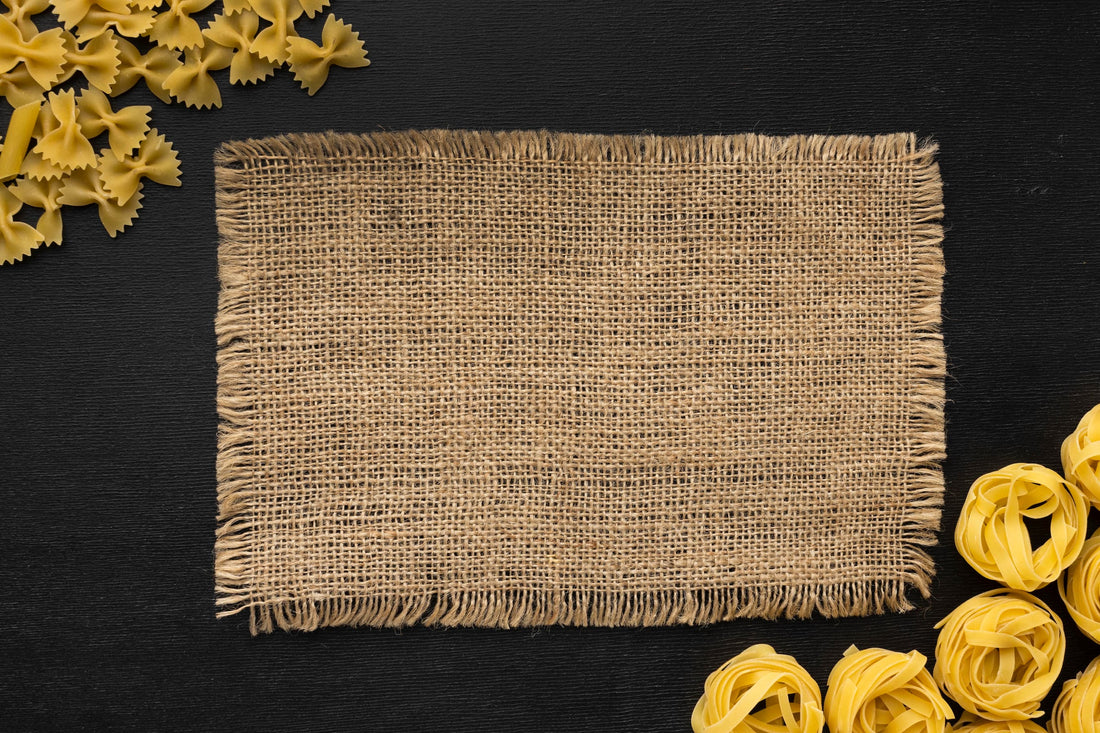
Why Jute is Known as Golden Fiber?
Share

In a world racing toward sustainability, the materials we choose matter more than ever. As the fashion and home décor industries strive to go green, one humble, golden fiber is making a powerful comeback — jute. But why is jute being hailed as the fabric of the future? Let’s unravel the story behind this miracle material and how it could redefine eco-conscious living.
1. What Is Jute?
Jute is a long, soft, and shiny vegetable fiber that can be spun into coarse, strong threads. It’s derived primarily from plants of the Corchorus genus and is predominantly grown in India and Bangladesh.Commonly known as the “Golden Fiber”, jute is the second most widely produced natural fiber after cotton — but with a significantly lower environmental impact.
2. Eco-Friendly from Seed to Finish
Low Water Consumption
Unlike cotton, which requires large amounts of water, jute needs minimal irrigation. It thrives in rain-fed environments, making it a more sustainable choice in water-scarce regions. According to environmental studies, cotton can require up to 20,000 liters of water to produce just 1 kilogram of fiber, while jute needs only a fraction of that amount.
No Pesticides Required
Jute is naturally pest-resistant. Farmers do not need to rely on toxic chemical pesticides or fertilizers. This not only benefits the soil and water systems around jute farms but also ensures safer working conditions for farmers. As a result, jute farming is healthier and more harmonious with the surrounding ecosystem.
Carbon Negative
Perhaps the most exciting benefit of jute is its ability to fight climate change. Jute plants absorb more CO₂ than trees during their growth cycle. In fact, one hectare of jute cultivation can absorb about 15 tons of carbon dioxide in just 100 days, making it one of the few carbon-negative crops on the planet. By simply growing jute, we can offset a substantial amount of greenhouse gas emissions.
3. 100% Biodegradable & Compostable
One of the biggest issues with synthetic fabrics is their long decomposition time. Polyester, for instance, can take up to 200 years to degrade and often sheds microplastics into the environment during washing.
- Fully biodegradable: It decomposes naturally in just 4 to 6 months, returning nutrients to the soil.
- Compostable: It breaks down without releasing any harmful toxins, making it safe for compost bins and landfills alike.
- Zero-waste: Leftover jute fibers are often reused to make paper, twine, or home décor items, further reducing waste.
By switching to jute products, especially in packaging and fashion, we can drastically cut down on plastic pollution and landfill overflow.
4. Durable Yet Stylish
While jute is eco-friendly, it’s also incredibly functional and fashionable — two traits essential for modern consumers.
Strength and Durability
Jute is known for its coarse, robust texture, making it ideal for products like bags, baskets, and rugs that need to endure wear and tear. Unlike plastic or synthetic alternatives that crack or lose shape, jute maintains its integrity over time.
Natural Aesthetics
The golden sheen of raw jute adds an earthy charm to any product. It complements various interior and fashion styles, from minimalist to bohemian. The fibers also take dyes well, allowing artisans to create beautiful, colorful designs.
Unique Texture
Each handmade jute item carries a unique pattern and feel. This makes every piece — be it a tote bag or cushion cover — a special, one-of-a-kind item, in contrast to mass-produced fashion goods.
If you love a touch of tradition with your style, explore this handmade jute tote bag that blends beauty and sustainability.
5. Boosting Rural Economies
Jute isn't just a sustainable choice — it's also a socially empowering fabric.
Empowering Artisans
Jute-based industries support thousands of artisans, especially women, in rural India and Bangladesh. These artisans are often skilled in weaving and handcrafting techniques passed down through generations. By purchasing jute products, consumers support these artisans and help preserve traditional craftsmanship.
Fair Trade and Livelihoods
Jute production often follows fair trade principles. It provides employment opportunities in farming, processing, spinning, and weaving sectors, ensuring that many families have access to a stable income.
Women-Led Enterprises
Many jute cooperatives and small businesses are women-led, empowering local communities economically and socially. Supporting these ventures not only promotes sustainability but also uplifts marginalized communities.
When you buy jute, you're not just choosing a product — you're investing in human dignity and community development.
6. Versatility Across Industries
Jute is far more than just a bag or a mat — it’s a multi-functional fiber with uses across various industries.
In Home Decor
Jute is increasingly being used for making rugs, curtains, wall hangings, and furniture upholstery. Its rustic charm and durability make it perfect for modern interiors.
In Agriculture and Landscaping
Jute geotextiles are used for soil erosion control, afforestation, and road construction. They are biodegradable alternatives to synthetic geotextiles, adding value to eco-friendly farming and infrastructure development.
In Packaging and Retail
With plastic bans increasing globally, jute is stepping up as the go-to material for reusable packaging, grocery bags, and gift sacks. Retailers are switching to jute packaging to align with green branding initiatives.
In Automobiles and Construction
Yes — even cars and homes! Jute composites are now used in car interiors and insulation materials in buildings. It’s lightweight, cost-effective, and environmentally safe.
The future of jute isn’t just green — it’s innovative.
Conclusion - Let's Embrace this Golden Fiber
Jute is more than just a fiber — it's a powerful solution to the environmental and social challenges we face today. From reducing carbon emissions and plastic waste to supporting artisan livelihoods and introducing timeless style, jute is proving its worth as the fabric of the future.
As conscious consumers, it's time we embrace this golden fiber not only for its beauty but also for its purpose.
Ready to make a meaningful switch? Browse our handmade jute tote bag collection and carry sustainability with style.
